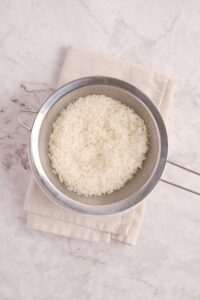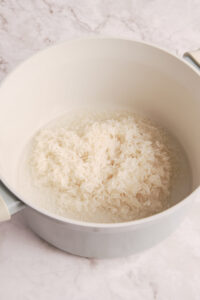Learn how to cook this staple and set yourself up for a lifetime of fantastic meals.
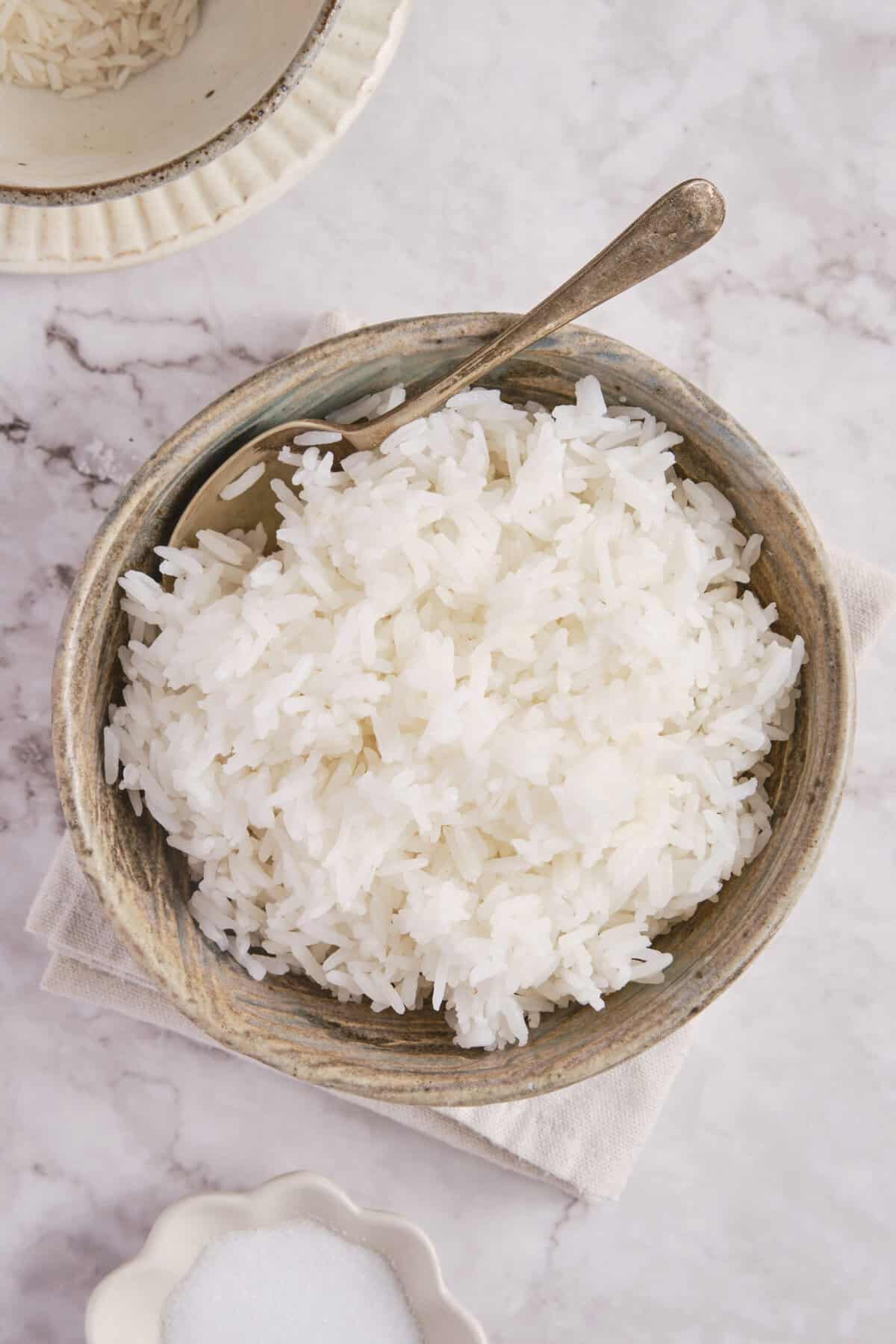
No matter what ingredients you’re cooking, chances are they’ll pair well with rice. This versatile starch is the hero of so many meals: always reliable, always delicious—if you know how to cook it, that is. If you’re unsure how to get it just right, this recipe will walk you through how to cook perfect rice every time. Specifically, we’re focusing on how to cook jasmine rice, a fragrant, long-grain variety.
Jasmine rice is primarily grown in Thailand and is consumed widely across Southeast Asia, making it the starchy base of choice for recipes like Thai Chicken Curry, Thai Green Curry or Thai Fried Rice. It’s a bit stickier than other white rice varieties and becomes moist, soft, and slightly sweet when cooked. Its nutty aroma and flavor are reminiscent of popcorn as well as pandan, a tropical plant often used for flavoring in Southeast Asian cuisine. These flavors diminish quickly, however, about 8 weeks after the rice is harvested. That means the jasmine rice you buy at your supermarket won’t retain much of the original strong, distinct flavor. But the subtleties that remain make it a fantastic addition to any meal.
One of the key factors for getting perfect rice is mastering the ratio of rice to water. Jasmine rice requires less water and cooking time than other rice varieties, but more resting time to reabsorb steam. If you add too much water, you’ll end up with mushy rice.
Is Jasmine Rice Healthy?
Though white rice such as jasmine rice may not be as nutrient-dense as some varieties of brown rice, it can still be a healthy part of an overall balanced diet. White rice is a carbohydrate, so it may not be ideal for those seeking to limit their consumption of carbs. They’re fine to consume in moderation, though, because carbs give the body energy and are an important part of balanced nutrition.
Why Rinse Jasmine Rice?
When it comes to cooking rice, don’t skip the rinsing step! The outside of each grain of rice is covered in a starch. This can cause the grains of rice to stick together while cooking, which can leave you with mushy, gummy rice, even if you follow the correct water ratio. Rinsing eliminates this potential problem.
To rinse your rice, you can use a sieve or do it in the pot you’ll cook the rice in. Simply run water over the rice—using your hands if needed to swirl the water and make sure it runs over all the grains evenly—until the water runs clear. Be sure to drain the cloudy water from the pot before filling it with fresh water for cooking. This will ensure every grain stays separate, and you’ll be left with perfect, fluffy rice.
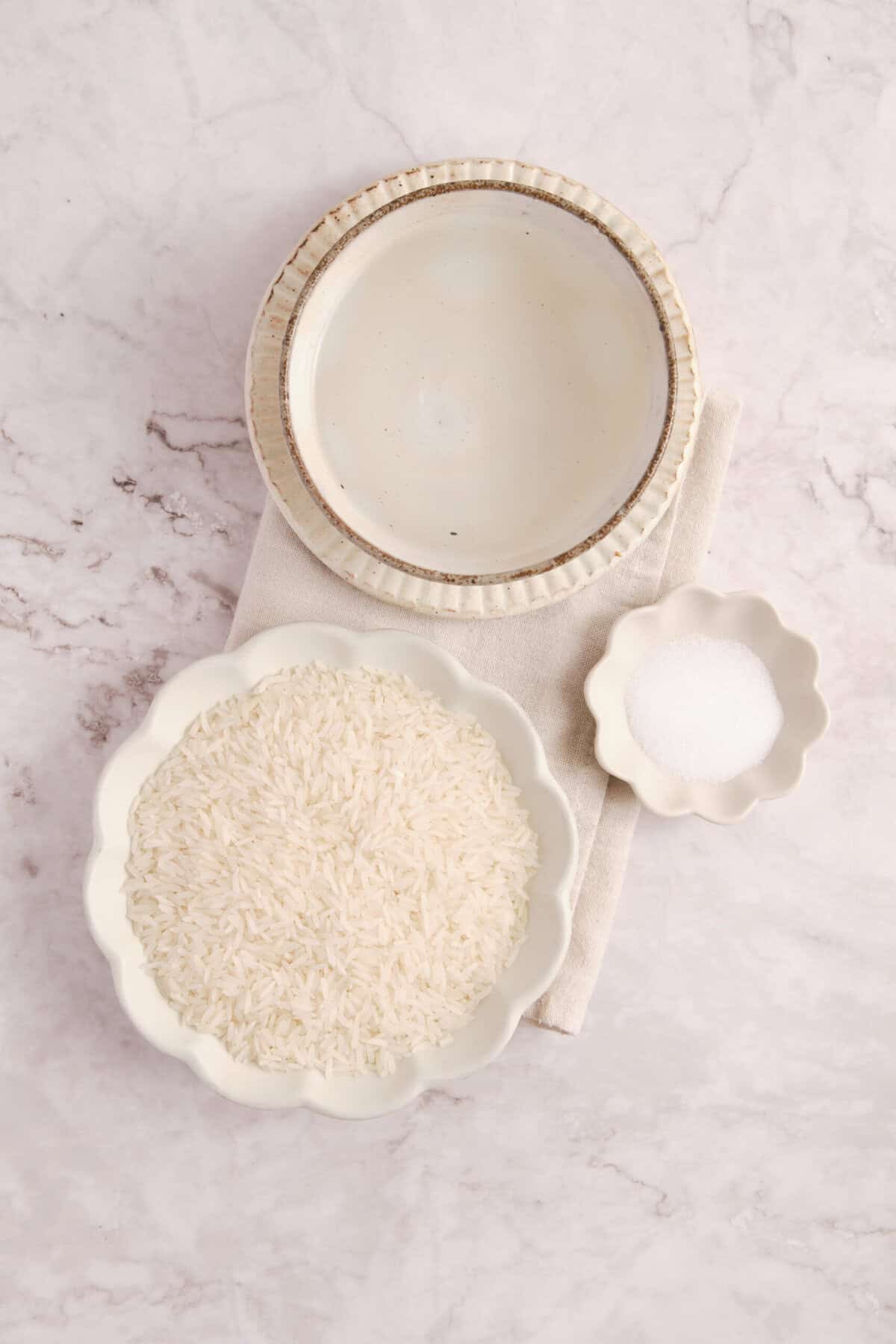
FAQs & Tips
If you have leftover jasmine rice, you can store it in the fridge in an airtight container for 3 to 5 days, or in the freezer for up to 6 months. For long-term storage, it’s a good idea to portion your rice first and then freeze for easier reheating. To reheat thawed leftovers in the microwave, place them in a microwave-safe bowl, add a splash of water, and cover with a damp paper towel. Zap in 30-second intervals, stirring in between, until it’s piping hot with an internal temp of 165°F. On the stovetop, use a pan with a tight-fitting lid, add a couple tablespoons of water, and reheat over low to medium heat, stirring occasionally, until it reaches that same, safe internal temperature.
While both are varieties of long grain rice, jasmine rice is softer, sweeter and slightly stickier than basmati rice. On the other hand, basmati is considered nuttier, fluffier and drier than jasmine rice. It’s important to note that basmati rice does not follow the same cooking time or water-to-rice ratio as jasmine rice. This Basmati Rice Recipe will show you the way!
This recipe provides instructions for how to cook jasmine rice on the stovetop, but you can also cook it in a rice cooker. You should still rinse your rice, and the water ratio will be the same. Simply follow your cooker’s instructions and select the white rice option. Once cooking time has finished, make sure to let it stand for 10 minutes, as it’s important that jasmine rice has time to steam and reabsorb moisture after cooking.
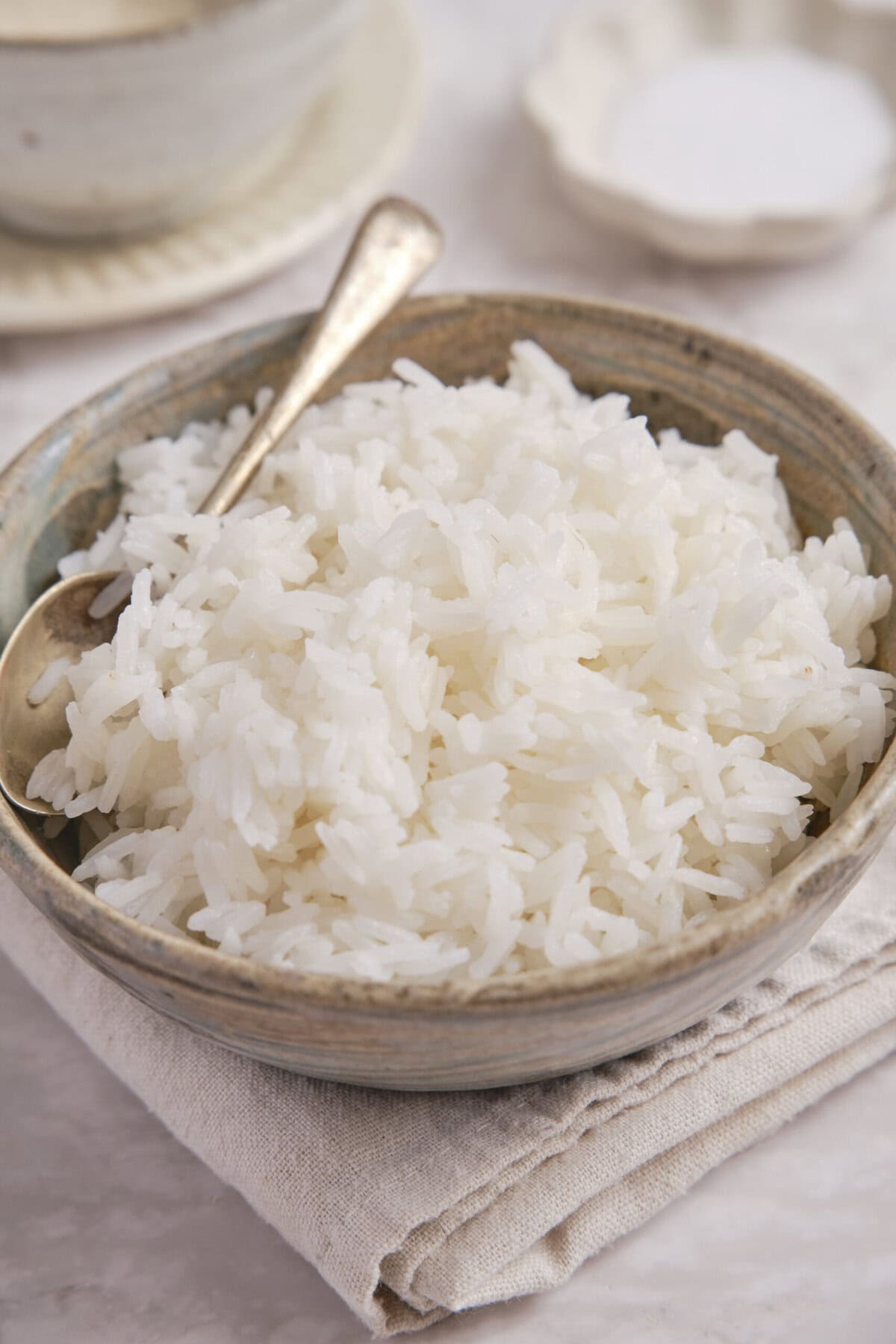
Serving Suggestions
Jasmine rice is a staple in Southeast Asian cuisine, so it’s an ideal option to serve with Thai, Vietnamese, and Cambodian dishes, for example. I mentioned earlier that it pairs perfectly with Thai curries, and it’s also great alongside recipes like these Thai Lettuce Wraps, this Spicy Thai Basil Chicken Stir-Fry, or these Pineapple Thai Grilled Chicken Skewers With Peanut Sauce.
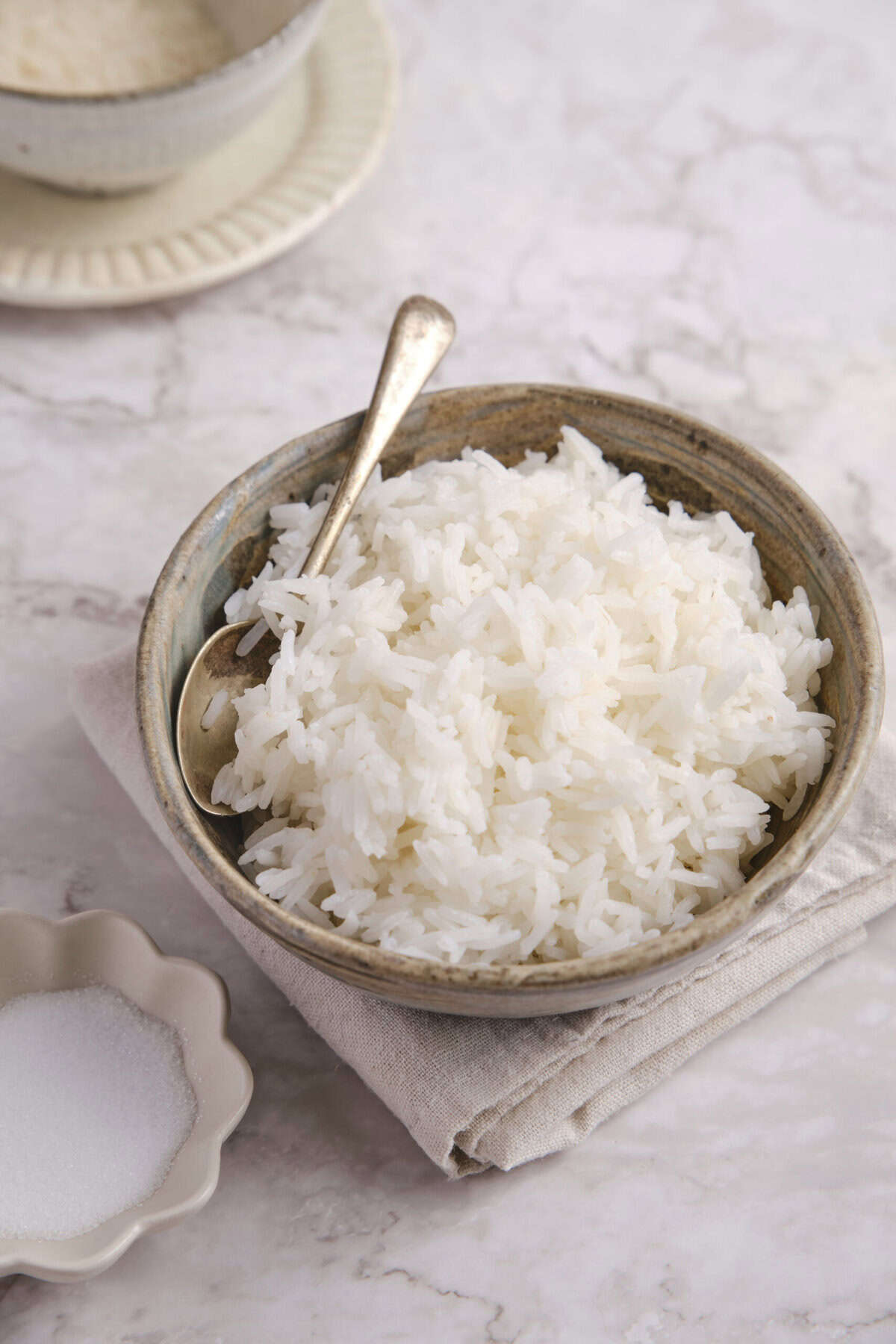
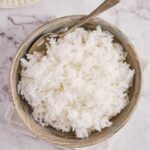
How to Cook Jasmine Rice
Ingredients
- 1 cup jasmine rice
- 1 1/3 cups water
- 1/4 teaspoon salt plus more to taste
Instructions
-
Rinse 1 cup of jasmine rice under cold running water until the water runs clear.

-
In a medium saucepan, mix the rinsed rice with the measured water and add salt.

-
Place the saucepan over medium-high heat and bring to a boil.

-
Once it reaches a boil, reduce the heat to low, cover with a tight-fitting lid, and let it simmer for 12 to 15 minutes.
-
Remove from heat and let the rice stand, covered, for 10 minutes.
-
Fluff the rice with a fork and serve warm.

Nutrition
The post How to Cook Jasmine Rice appeared first on Food Faith Fitness.

